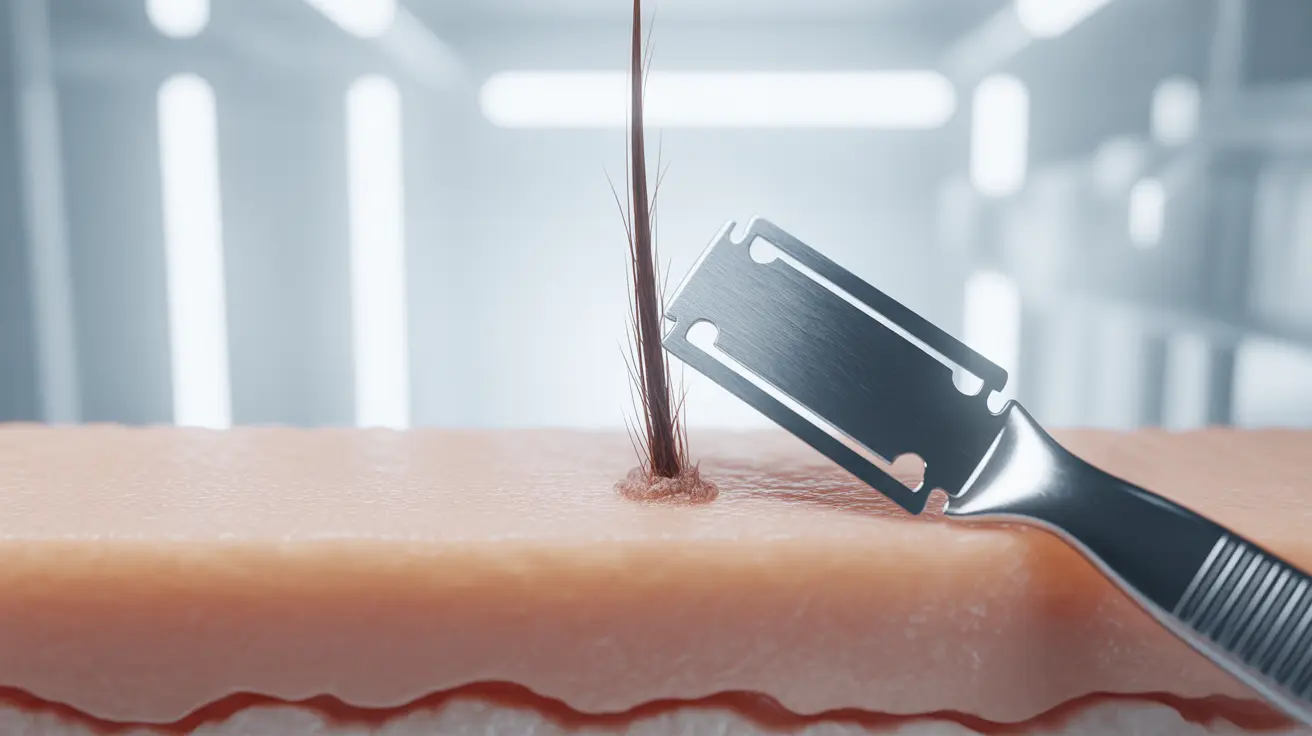Magnetic bracelets have gained popularity as an alternative treatment for various types of chronic pain, particularly arthritis and joint discomfort. These accessories, embedded with magnets, are marketed with claims of reducing inflammation, improving circulation, and providing natural pain relief. But with so many people seeking alternatives to traditional medications, it's essential to understand what the science actually says about their effectiveness.
The appeal of magnetic bracelets lies in their promise of non-invasive, drug-free pain management. However, separating fact from marketing claims requires a careful examination of the available research and understanding of how magnetic fields might theoretically interact with the human body.
The Theory Behind Magnetic Therapy
Proponents of magnetic therapy suggest that magnets can influence the body's natural bioelectric processes and improve blood flow to affected areas. The theory proposes that magnetic fields can affect the movement of charged particles in the blood, potentially reducing inflammation and promoting healing in tissues surrounding painful joints.
Some advocates claim that magnets can alter nerve signals that transmit pain messages to the brain, essentially blocking or reducing the perception of discomfort. Others suggest that magnetic fields can influence the body's production of endorphins, the natural pain-relieving chemicals produced by the nervous system.
However, it's important to note that these proposed mechanisms remain largely theoretical, with limited scientific evidence to support how weak magnetic fields from jewelry might create meaningful physiological changes in the human body.
What Scientific Research Reveals
Multiple scientific studies have investigated whether magnetic bracelets provide genuine pain relief or if any benefits are primarily due to placebo effects. The research findings have been mixed, with most high-quality studies showing minimal to no significant benefit from magnetic jewelry.
A systematic review published in reputable medical journals examined various studies on magnetic therapy for pain conditions. The researchers found that while some participants reported subjective improvements in pain levels, these benefits were often statistically insignificant when compared to control groups wearing non-magnetic placebo bracelets.
One notable study focused specifically on osteoarthritis patients wearing magnetic bracelets for 12 weeks. While some participants experienced minor pain reduction, the improvement was not significantly different from those wearing copper bracelets without magnets or standard medical bracelets, suggesting that psychological factors may play a substantial role in any perceived benefits.
The strength of magnets used in commercial bracelets is typically much weaker than those used in medical magnetic resonance imaging (MRI) or therapeutic magnetic devices studied in clinical settings. This raises questions about whether consumer-grade magnetic jewelry can generate sufficient magnetic field strength to produce meaningful biological effects.
Safety Considerations and Medical Device Interactions
For most people, magnetic bracelets are generally considered safe to wear and rarely cause adverse effects. However, there are important safety considerations, particularly for individuals with certain medical conditions or implanted devices.
People with pacemakers, insulin pumps, or other electronic medical devices should consult their healthcare provider before using magnetic therapy products. While the magnets in jewelry are typically weak, they could potentially interfere with the proper functioning of sensitive electronic equipment, especially when worn in close proximity to these devices.
Pregnant women are often advised to avoid magnetic therapy as a precautionary measure, though there is limited research on potential effects during pregnancy. Additionally, individuals with fresh wounds or surgical sites should be cautious, as some theories suggest magnets might affect healing processes, though scientific evidence for this concern is limited.
Some people may experience skin irritation from the metal components of magnetic bracelets, particularly if they have allergies to nickel, copper, or other materials commonly used in jewelry manufacturing.
Comparing Magnetic Bracelets to Proven Treatments
When evaluating magnetic bracelets as a pain management option, it's crucial to compare their effectiveness to established, evidence-based treatments for conditions like arthritis and chronic joint pain.
Nonsteroidal anti-inflammatory drugs (NSAIDs) like ibuprofen have extensive research supporting their effectiveness for reducing both pain and inflammation associated with arthritis. Physical therapy has similarly strong evidence for improving joint function, reducing stiffness, and managing pain through targeted exercises and movement strategies.
Other proven approaches include topical pain relievers, corticosteroid injections, heat and cold therapy, and lifestyle modifications such as weight management and regular exercise. These treatments have undergone rigorous clinical testing and have demonstrated measurable benefits in reducing pain and improving quality of life.
In contrast, magnetic bracelets lack the robust scientific evidence that supports these conventional treatments. While they may be used as a complementary approach, they should not be considered a substitute for proven medical interventions, especially for serious or progressive conditions.
The Role of Placebo Effects in Pain Management
Understanding the placebo effect is essential when evaluating any pain treatment, including magnetic bracelets. The placebo effect occurs when people experience real improvements in symptoms simply because they believe a treatment will help, even when the treatment itself has no active therapeutic properties.
Pain perception is particularly susceptible to psychological influences, and the belief that a treatment will provide relief can sometimes result in actual reduction in discomfort. This doesn't mean the improvement is "imaginary" – the pain relief experienced by some magnetic bracelet users may be genuine, even if it stems from psychological rather than physiological mechanisms.
However, relying solely on placebo effects for pain management can be problematic, especially for progressive conditions that may worsen without appropriate medical intervention. While psychological factors play an important role in pain management, they work best when combined with evidence-based treatments rather than used as standalone solutions.
Making Informed Decisions About Magnetic Therapy
For individuals considering magnetic bracelets as part of their pain management strategy, it's important to maintain realistic expectations and prioritize communication with healthcare providers. While these accessories are generally safe and may provide some psychological comfort, they should complement rather than replace established medical treatments.
People experiencing persistent joint pain, arthritis symptoms, or other chronic pain conditions should seek proper medical evaluation to identify underlying causes and develop comprehensive treatment plans. Early intervention with proven therapies can often prevent conditions from worsening and improve long-term outcomes.
If someone chooses to try magnetic bracelets, they should monitor their symptoms carefully and continue following their healthcare provider's recommendations for managing their condition. Any significant changes in pain levels or new symptoms should be discussed with medical professionals promptly.
Frequently Asked Questions
Do magnetic bracelets actually work for arthritis pain, or is the relief just a placebo effect?
Current scientific research suggests that any pain relief from magnetic bracelets is likely due to placebo effects rather than direct therapeutic action. While some people report feeling better when wearing these bracelets, controlled studies have not demonstrated significant differences between magnetic and non-magnetic bracelets for arthritis pain relief. The psychological comfort and expectation of improvement may contribute to perceived benefits.
What does scientific research say about the effectiveness of magnetic bracelets for chronic pain?
Scientific studies on magnetic bracelets for chronic pain have produced mixed results, with most high-quality research showing minimal or no significant benefit compared to placebo treatments. Systematic reviews of multiple studies indicate that while some participants report subjective improvements, these benefits are often not statistically significant when proper control groups are used. The magnetic fields generated by consumer bracelets are typically too weak to produce measurable physiological changes.
Are magnetic bracelets safe to wear, and can they interact with medical devices like pacemakers?
Magnetic bracelets are generally safe for most people, but they can potentially interfere with electronic medical devices such as pacemakers, insulin pumps, or other implanted devices. Individuals with these devices should consult their healthcare provider before using magnetic therapy products. Some people may also experience skin irritation from the metal components. Pregnant women are typically advised to avoid magnetic therapy as a precautionary measure.
How do magnetic bracelets compare to proven treatments like NSAIDs or physical therapy for joint pain?
Magnetic bracelets lack the robust scientific evidence that supports proven treatments like NSAIDs and physical therapy. These established treatments have undergone extensive clinical testing and demonstrate measurable benefits for reducing pain and inflammation. While magnetic bracelets may be used as a complementary approach, they should not replace evidence-based medical treatments, especially for serious or progressive joint conditions.
Should I use a magnetic bracelet instead of seeing a doctor for my arthritis symptoms?
No, magnetic bracelets should never replace proper medical evaluation and treatment for arthritis symptoms. Persistent joint pain requires professional medical assessment to identify underlying causes and develop appropriate treatment plans. Early intervention with proven therapies can prevent conditions from worsening and improve long-term outcomes. While magnetic bracelets may be worn as a complementary approach, they should always be used alongside, not instead of, medical care.




